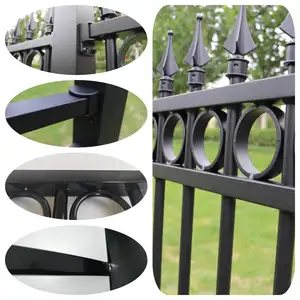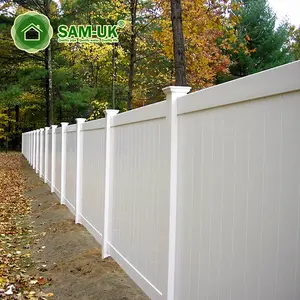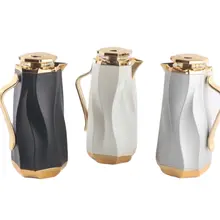Introduction
Fencing is more than just a boundary around your property; it's a statement of style, a measure of security, and a potential boost to your property's value. Among the various options available, pine fence panels stand out for their unique blend of affordability, durability, and aesthetic appeal. This article delves into the world of pine fence panels, exploring their benefits, considerations for selection, installation and maintenance tips, and how they can enhance your property's value. Whether you're a homeowner looking to revamp your outdoor space or a property investor seeking cost-effective ways to increase property value, this comprehensive guide on pine fence panels is for you.
The Appeal of Pine Fence Panels
Pine fence panels are a popular choice due to their cost-effectiveness. These fences are pressure-treated to resist weather damage, mildew, fungus, and general wood rot. Despite this, they may not last as long as cedar fences. Regular maintenance, including staining, repainting, and sealing, is required to keep a pine fence in good condition. The primary advantage of pine fencing is its affordability, making it an attractive option for those looking to keep upfront costs down. However, it's important to note that pine fences can fade, warp, and are susceptible to weather and insects.
Understanding the Benefits of Pine Wood for Fencing
Pine wood fences, especially those treated with preservatives, offer significant benefits. They are known for their strength and durability, capable of withstanding weather conditions and lasting for many years. Treated pine wood is more resistant to rot and insect damage compared to untreated wood, making it an excellent choice for those who want a strong and attractive fence. Additionally, the process of pressure-treating the wood enhances its resilience, allowing for longer lasting results by protecting against moisture, termites, and fungal decay.
Durability and Longevity
Pine wood is known for its durability and longevity, making it an excellent choice for fence panels. Despite being a softwood, pine can withstand use and wear, both indoors and outdoors. It may nick and dent more easily than hardwoods, and might require more maintenance, but it will still be standing, functioning, and looking good for a long time. Pine wood naturally resists shrinking and swelling due to changes in humidity, holding its shape well. This resistance to environmental changes contributes to its durability, ensuring your pine fence panels will last for years to come.
Aesthetic Appeal
Pine, with its white or pale yellow color and lightweight, open grain, offers a distinctive aesthetic appeal. It can be moulded into different shapes to suit individual requirements and styles. Furthermore, it can be painted in a solid color or in a translucent stain to emphasize its unique grain. This versatility allows pine fence panels to create a traditional appearance that suits both modern and period properties, enhancing the overall aesthetic appeal of your property.
Cost-Effectiveness
Pressure-treated pine is a cost-effective choice for fencing. It is less expensive than cedar, with prices ranging from $20-30 per linear foot, including labor and material costs. For an average residential backyard fence measuring 150 feet in length, the cost can range from $1,500 up to $3,000. Despite being more susceptible to elements, pine's affordability and availability make it a popular choice for many homeowners. However, it's important to note that pine fences require regular maintenance to avoid rotting, which could add to the overall cost over time.
Environmental Impact
Pine wood is a sustainable material due to its fast regeneration and carbon storage potential. However, the sustainability of pine wood can be impacted by factors such as the distance and mode of transportation, and the land-use history. Pine trees are a part of the ecosystem, providing food and shelter for many birds and mammals. However, single-species plantations can lead to deforestation and loss of biodiversity. Therefore, when choosing pine fence panels, it's important to consider the source of the wood and the environmental impact of its production and transportation.
Choosing the Right Pine Fence Panels
When choosing the right pine fence panels, consider the wood grade. Clear grade, premium, select, and construction grades are preferred for their quality and durability. Pine is a common choice for fencing due to its durability and affordability. It falls under the pressure-treated wood category, treated with chromated copper arsenate to prevent pest infestation. Pine wood is often treated with water-repellent stains that prevent rot and increase the fence’s lifespan. However, the quality and grade of wood can impact the cost, so consider your budget when making a selection.
Size and Design Considerations
When choosing pine fence panels, size and design are crucial considerations. Our platform offers a variety of sizes, with nominal panel heights ranging from 2 ft to over 6 ft, and widths from 3 ft to 8 ft. The number of pickets per panel can also vary, offering options from 11 to over 30 pickets. Design-wise, you can choose from privacy panels, spaced picket, or board on board designs. The panel top shape can be flat or scalloped, and picket top styles include flat top, French Gothic, and dog-eared. These options allow you to find the perfect pine fence panel to suit your property's aesthetic and functional needs.
Quality and Grade of Wood
Pine has a complex grading system that can sometimes be confusing. The top grade is referred to as clear, finish, or C select, which should be defect-free. Next comes #1 common, where you'll find scattered tight knots. In the utility grades — #2 and #3 common — the boards may have large knots, pith, sap pockets, and checks. Despite its shortcomings, the 'toughness' of pine can be a considerable advantage, making it a suitable choice for fence panels.
Installation and Maintenance of Pine Fence Panels
Pine fence panels require proper installation and maintenance to ensure longevity. Incorrectly set sprinkler systems can cause water marks and lead to warping and cracking of the boards. To prevent this, ensure the sprinklers are not watering the fence directly. Regular maintenance, including cleaning the fence every three to four years with a bleach solution, can prevent the build-up of dirt, debris, and mold. This process helps to avoid permanent white and black scars on the fence caused by years of water absorption and neglect.
Installation Process
Installing pine fence panels is not a complex task, but it requires effort. It's advisable to have a helper. The process involves digging post holes, setting posts in concrete, and placing the panels. Each panel needs to be held level while being attached to the fence. Posts are typically installed on the inside of the fence, but can be placed outside based on personal preference. Remember, the installation process can significantly impact the overall look and functionality of your fence.
Maintenance Tips
Maintaining pine fence panels is crucial for their longevity. Proper sprinkler settings can prevent water damage and the appearance of mold and mildew. Regular cleaning every three to four years with a bleach solution can remove dirt, debris, and green mildew. However, once the pine wood turns white due to water absorption, the discoloration becomes permanent. Therefore, regular maintenance can prevent these issues and keep your pine fence looking good for years.
How Pine Fence Panels Boost Property Value
A pine privacy fence is not only cost-effective, ranging from $20 to $45 per linear foot for basic low-grade wood, but it also adds value to your property. With proper maintenance and sealing, a pine fence can last up to 10 years, making it a worthwhile investment. The aesthetic appeal of pine fence panels can enhance your property's curb appeal, attracting potential buyers. Furthermore, the added privacy and security offered by a pine fence can increase your property's overall value. Remember, the quality of the wood and the installation process play a crucial role in the longevity and effectiveness of your fence.
Enhanced Curb Appeal
Pine fence panels are a popular choice for homeowners looking to enhance their property's curb appeal. These panels offer a variety of designs that can be painted or left natural, allowing homeowners to customize their fence to match their home's aesthetic. The natural beauty of pine wood can significantly boost the curb appeal of any property. However, it's important to note that while pine fence panels can be ethically sourced, they do require regular maintenance to keep them looking their best. Despite this, many homeowners find that the aesthetic appeal of pine fence panels is well worth the investment.
Increased Privacy and Security
Pine fences are known for their affordability and availability. They make great choices for privacy fencing, providing you and your family with the security and privacy that you deserve. If you’re mulling over pine fencing for your property, here are some of the pros and cons to help you make a great decision. Pine fencing is one of the most affordable options for wood fencing. It’s a great choice for homeowners searching for wood fencing on a budget.
Potential Return on Investment
Adding a fence to your property can increase your home’s value, but it depends on the type of fence, the materials, and the size. Pine fence panels, being cost-effective and aesthetically pleasing, can be a good investment. However, it's important to consider the return on investment (ROI). Not all fence installations have a high enough ROI to make it worth your while. It's advisable to hire an appraiser to evaluate your home to see if installing a pine fence is a good investment.
Conclusion
In conclusion, pine fence panels offer a cost-effective, durable, and aesthetically pleasing fencing solution that can significantly boost your property's value. Their unique blend of affordability and durability, coupled with their aesthetic appeal, makes them an attractive choice for homeowners and property investors alike. However, the longevity and effectiveness of a pine fence depend heavily on the quality of the wood, the installation process, and regular maintenance. Furthermore, it's crucial to consider the environmental impact of sourcing pine wood and to ensure it's ethically sourced. With the right care and attention, a pine fence can be a valuable addition to your property, enhancing its curb appeal, providing privacy and security, and potentially offering a good return on investment.










































 浙公网安备 33010002000092号
浙公网安备 33010002000092号 浙B2-20120091-4
浙B2-20120091-4